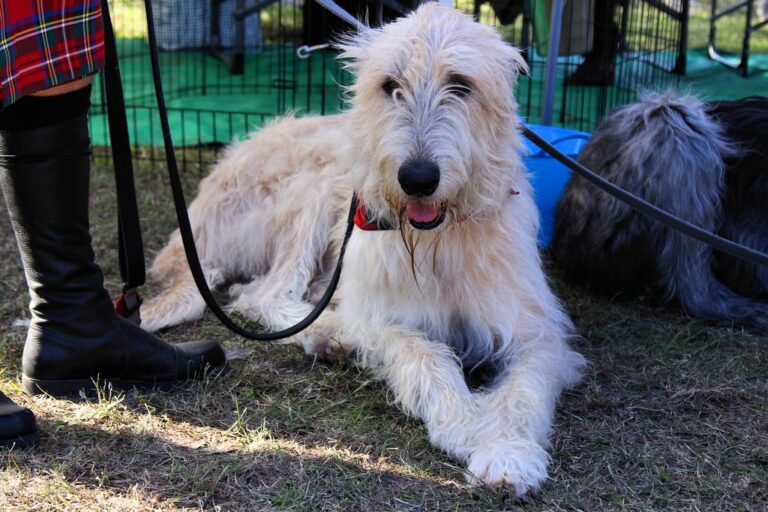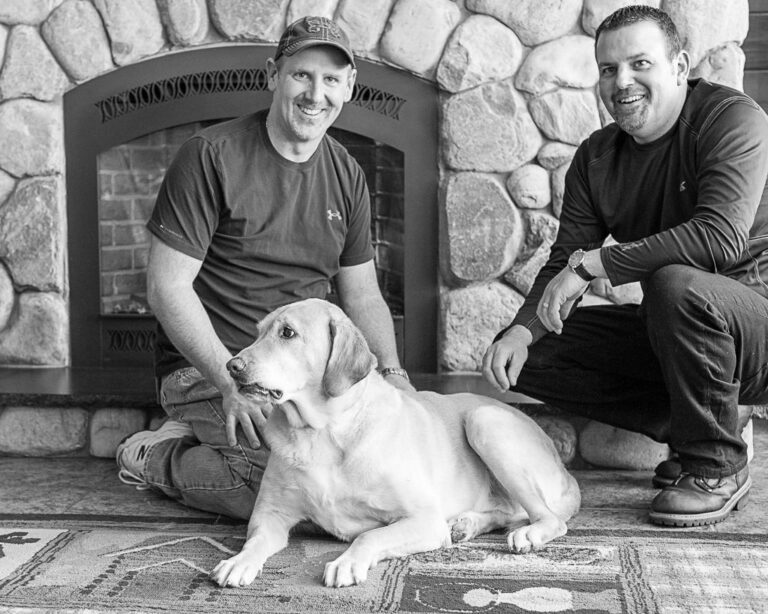Decoding Your Dog’s Behavior: Why Is Your Dog Acting Differently?
Understanding your dog’s behavior is crucial for maintaining a healthy and happy relationship. Dogs communicate through various signals, both verbal and non-verbal, to convey their needs and emotions. If you notice any changes in your dog’s behavior, it’s important to decode the underlying reasons. This article explores the different aspects of canine behavior, uncovers the root causes of behavioral changes, addresses common behavioral issues, and provides training techniques to improve your dog’s behavior.
Key Takeaways
- Pay attention to your dog’s body language and vocalizations to understand their communication.
- Behavioral changes in dogs can be caused by health issues, environmental factors, or changes in routine or environment.
- Separation anxiety, aggression, and fear are common behavioral issues that can be addressed with proper training and support.
- Positive reinforcement, consistency, and socialization are effective training techniques to improve your dog’s behavior.
- Consulting a professional dog trainer or behaviorist can provide additional guidance and support in understanding and addressing your dog’s behavior.
Is Your Dog Trying to Tell You Something?

Understanding Canine Communication
When it comes to understanding our furry friends, it’s important to pay attention to their natural dog language. Dogs have their own unique way of communicating, and by learning to interpret their signals, we can better understand what they’re trying to tell us. While it may seem like a complex code, there are a few key things to look out for.
Interpreting Body Language
When it comes to understanding our furry friends, dog body language is key. Dogs communicate through a variety of signals, and being able to interpret these signals can help us better understand their needs and emotions. It’s important to pay attention to their body posture, facial expressions, and tail movements. By observing these cues, we can gain insight into how our dogs are feeling and what they may be trying to communicate.
Decoding Barks and Growls
When our dogs bark or growl, it’s their way of communicating with us. It’s important to pay attention to these vocalizations as they can provide valuable insights into our dog’s emotions and needs. Barks and growls can indicate a range of emotions, from excitement to fear or aggression. By understanding the context and nuances of these vocalizations, we can better understand what our dogs are trying to tell us.
Uncovering the Root Causes of Behavioral Changes

Health Issues and Pain
Health issues and pain can have a significant impact on your dog’s behavior. When our furry friends are not feeling their best, they may exhibit changes in their mood, energy levels, and overall demeanor. It’s important to pay attention to these signs as they could be indicators of underlying health problems. If you notice any unusual behavior in your dog, such as decreased appetite, lethargy, or excessive grooming, it’s essential to consult with a veterinarian to rule out any medical issues. Dog products can also play a role in your dog’s well-being. Ensuring that your dog has a comfortable bed, nutritious food, and appropriate toys can contribute to their overall happiness and behavior.
Environmental Factors
Environmental factors can play a significant role in your dog’s behavior. From changes in their surroundings to the presence of new stimuli, these factors can have a profound impact on how your dog acts and reacts. It’s important to pay attention to these environmental cues and understand how they may be affecting your furry friend.
Changes in Routine or Environment
Changes in routine or environment can have a significant impact on your dog’s behavior. Dogs are creatures of habit, and any sudden changes can cause them to feel anxious or stressed. It’s important to understand that dogs rely on routine and familiarity to feel safe and secure. When their routine is disrupted or their environment changes, they may exhibit behavioral changes as a way of expressing their discomfort or unease.
Addressing Common Behavioral Issues

Separation Anxiety: When Your Dog Can’t Stand Being Alone
When our furry friends experience separation anxiety, it can be a challenging time for both them and us. Leaving them alone can trigger a range of behaviors that indicate their distress. Understanding their dog personality and the underlying causes can help us address this issue and provide the support they need.
One way to help alleviate separation anxiety is by gradually desensitizing our dogs to being alone. This involves slowly increasing the time they spend alone, starting with short periods and gradually extending it. By doing this, we can help them build confidence and reduce their anxiety.
Another technique that can be effective is counterconditioning. This involves associating being alone with positive experiences, such as giving them a special treat or toy when we leave. By creating positive associations, we can help them feel more comfortable and less anxious when left alone.
It’s important to remember that each dog is unique, and what works for one may not work for another. Patience and understanding are key when dealing with separation anxiety. By providing a safe and secure environment, along with consistent routines and plenty of love and attention, we can help our dogs overcome their fear of being alone.
Aggression: Dealing with Unwanted Behavior
Dealing with aggression in dogs can be challenging. It’s important to understand that aggression is a natural behavior in dogs and can be triggered by various factors. One common trigger is the fight or flight response, which is the body’s instinctive reaction to a perceived threat. When a dog feels threatened, their body goes into high alert, preparing to either fight or flee.
Fear and Phobias: Helping Your Dog Overcome
Dealing with fear and phobias in our furry friends can be a challenging task. It’s important to understand that dogs have their own unique set of fears and anxieties, just like humans do. One common issue that many dogs face is dog panic. This occurs when a dog becomes overwhelmed with fear and experiences a sudden and intense panic attack. It can be triggered by various factors, such as loud noises, unfamiliar environments, or traumatic experiences.
Training Techniques to Improve Behavior

Positive Reinforcement: Rewarding Good Behavior
When it comes to training our furry friends, we believe in the power of positive reinforcement. Encouraging good behavior is key to building a strong bond with our dogs and helping them thrive. By using rewards such as treats, praise, and playtime, we can motivate our dogs to repeat desirable actions and learn new tricks. It’s important to remember that each dog is unique, so finding what motivates them may require some trial and error. But once we discover what makes our dog’s tail wag with excitement, we can use it to our advantage in training.
Consistency and Boundaries: Establishing Clear Rules
When it comes to training our furry friends, consistency and boundaries are key. By establishing clear rules and sticking to them, we can help our dogs understand what is expected of them. This not only creates a sense of structure and security for our dogs, but it also helps prevent behavioral issues from arising. However, it’s important to remember that every dog is unique, and what works for one may not work for another. It’s essential to tailor our training techniques to suit our individual dog’s needs and personality.
Socialization: Encouraging Healthy Interactions
When it comes to socialization, we believe that it is crucial for dogs to interact with other dogs and humans. Dog sniffing is an important part of this process, as it allows dogs to gather information about each other. It’s their way of saying hello and getting to know one another. By allowing your dog to engage in sniffing behavior, you are giving them the opportunity to communicate and build relationships. So, the next time you take your dog for a walk, don’t rush them when they stop to sniff. Let them explore and make connections with their furry friends.
In Conclusion
Understanding your dog’s behavior can be a challenging but rewarding journey. By interpreting their body language, decoding their barks and growls, and paying attention to health issues, environmental factors, and changes in routine, you can uncover the root causes of their behavioral changes. Addressing common issues like separation anxiety, aggression, and fear and phobias requires patience and understanding. Through positive reinforcement, consistency and boundaries, and socialization, you can train your dog to improve their behavior. Remember, every dog is unique, so be sure to tailor your approach to their individual needs. With time and effort, you can build a strong bond with your furry friend and create a harmonious living environment. Happy dog parenting!
Frequently Asked Questions
Why is my dog suddenly aggressive?
Sudden aggression in dogs can be caused by various factors, such as fear, pain, or a change in their environment. It is important to consult with a professional dog behaviorist or trainer to determine the underlying cause and develop a suitable treatment plan.
How can I help my dog overcome separation anxiety?
Separation anxiety is a common behavioral issue in dogs. To help your dog overcome it, gradually desensitize them to your departures, provide mental and physical stimulation, use calming techniques like music or pheromone diffusers, and consider professional behavior modification training if needed.
Why does my dog bark excessively?
Excessive barking in dogs can be due to various reasons, such as boredom, fear, territorial behavior, or seeking attention. It is important to identify the underlying cause and address it through proper training, mental stimulation, and providing outlets for their energy.
How can I stop my dog from chewing on furniture?
Chewing on furniture is a common issue in dogs, especially puppies. To prevent this behavior, provide appropriate chew toys, supervise your dog, use deterrent sprays, and redirect their chewing to acceptable items. Consistency and positive reinforcement are key in training them to chew on appropriate objects.
What can I do to help my fearful dog?
Fearful behavior in dogs can be addressed through desensitization and counter-conditioning techniques. Gradually expose your dog to the source of fear in a controlled and positive manner, reward calm behavior, and seek professional help if the fear is severe or impacting their quality of life.
How do I teach my dog basic obedience commands?
Teaching basic obedience commands to your dog requires consistency, positive reinforcement, and patience. Break down the commands into small steps, use rewards or treats to motivate them, and practice in a quiet and distraction-free environment. Consider enrolling in a training class for additional guidance.







2 Comments